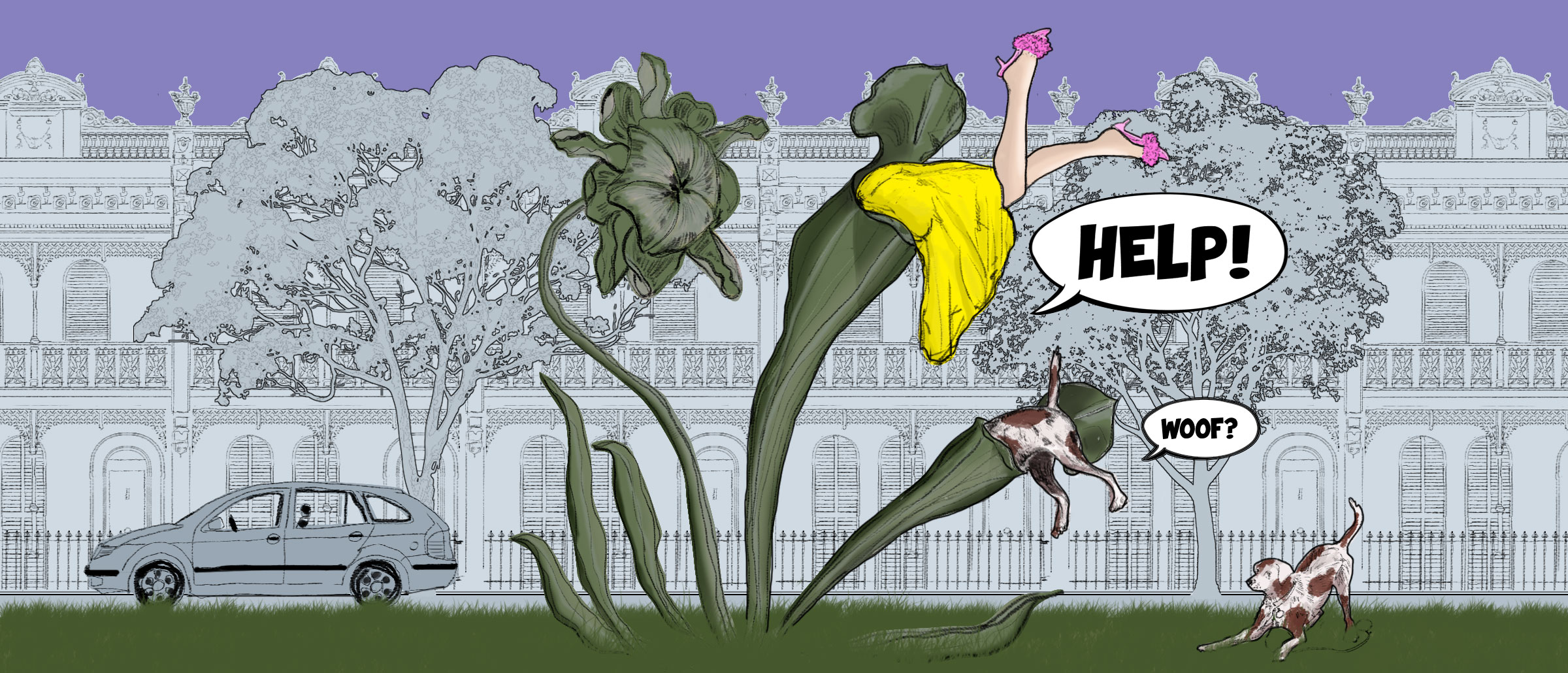An Alphabet That’ll Make You Hungry

- Words by
- Sally Wilson
- Illustration by
- Charlotte Day
The other day I was browsing in a bookshop when the cover of geobiologist Hope Jahren’s memoirs Lab Girl jumped out. You know that feeling when you’re drawn towards a book based on the primal call of its cover? Only afterwards did I realise I’d been emailing with the person responsible for weeks. Her name is Charlotte Day.
Charlotte is a gardener-turned-illustrator based in London, who first trained with the British Royal Horticultural Society, went on to complete a Master’s degree in textile design at the Chelsea College of Art, and finally found a home with illustration. What’s plain to see in all of Charlotte’s work is the lingering evidence of horticultural training, combined with a natural love of plants.
“When I was a trainee gardener I found drawing plants was a really great way to understand them and served as a fantastic aide-memoir,” says Charlotte. “Fine details and adaptations say much about how something grows and its native habitat. They allow the viewer to recognise if not identify particular plants.”
Charlotte’s hand-painted floral works have appeared on everything from book covers to magazine editorials and Yardley’s signature perfumes. But it’s a smaller, personal project that we’re here to discuss today. With some prompting from her partner Jack Hughes (who’s a graphic designer and food enthusiast), Charlotte began researching and illustrating her Edible A-Z of Flowers.
The edible alphabet is a beautiful series, depicting flowers climbing up and around individual letters, where each one becomes a form of supportive scaffolding.
Marigolds make neighbours with nasturtiums and yarrow and zucchini flowers are planted out as true, alphabetical companions. Accompanying each illustration are useful growing tips and a handful of cooking suggestions, enough to propel you out into the garden and the kitchen.
On the subject of yarrow, Charlotte describes how the medicinal herb attracts ladybirds and hoverflies, as well as improving soil conditions. “Raw flowers have a strong, bitter flavour similar to sage and are often made into a tea or used in place of hops when brewing beer. If dried, blooms can be used as a spice that works particularly well with shellfish and curries.”
She offers intimate, insider knowledge when it comes to nasturtiums (“harvesting on a cool morning delivers a more delicate flavour”) and celebrates fennel for its “lively aniseed aroma and fine, feathery fronds that are irresistible to the touch.”
Drawing twenty-six wildly different florals suits Charlotte’s deep interest in the plant kingdom. “I see drawing anything as a fantastic opportunity to observe and learn a little about it,” she tells me.
Far from having a favourite plant to draw I’m happiest drawing something different every time!”
This month we present a number of Charlotte’s individual works from the Edible A-Z of Flowers, as a playful nod to April’s theme of Small. The descriptions below appear in Charlotte’s own words, with growing tips slightly adapted to Australian conditions.
Sunflower
“As the name suggests, these flowers love to bathe in sunshine all day long,” says Charlotte. “The seeds are used widely in oils, snacks and muesli, however, you can munch away long before the flowers start to droop. An unopened bud can be steamed like an artichoke or if you’d rather enjoy the full bloom first then wilt the bittersweet petals to make a nutty addition to pasta.”
Position: Full sun
Plant: Seeds in spring to early summer
Soil: Well-drained, fertile soil
Marigold
“Not to be confused with the scented Tagetes species of marigold, which does not make good eating, Calendula officinalis is easy to grow and blooms all summer. The bright orange petals have a tangy taste and peppery flavour that adds colour and zing to salads as well as being wonderful in soups, stews and risotto. Used as a substitute to saffron for colouring cheese, eggs and rice.”
Position: Full sun or part shade
Plant: Seeds in spring and autumn
Soil: Well-drained, standard soil
Asparagus pea
“Rather than climbing up canes like some other legumes this shrubby vegetable stays low — making a great ground cover. Carrying deep, rich blooms that are followed by small, unusual seed pods, which taste very much of Asparagus. Young pods should be steamed or sautéed in a little butter, while the milder flavoured flowers can be blanched or used fresh as great garnish for salads.”
Position: Full sun
Plant: Seeds in spring to early summer
Soil: Well-drained, standard soil
Lavender
“English varieties of this gorgeously aromatic shrub bear the sweetest fragrance and impart the most flavour during cooking. Drying the flowers intensifies their floral yet citrus sweetness. Best infused with sugars used for baking to make extra special scones or shortbread. Used in place of rosemary in savoury recipes and sauces; particularly complements chicken, duck or lamb.”
Position: Full sun
Plant: Seeds, container plants or cuttings in spring
Soil: Well-drained, reasonably fertile soil
—
Charlotte Day’s complete Edible A-Z of Flowers can be viewed here. You can also click through to her website and social media links below.









